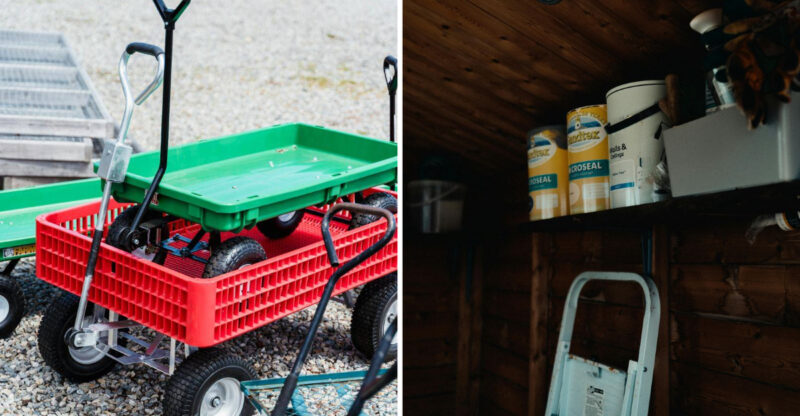8 Garden Tweaks That Could Improve Indoor Comfort

Have you ever thought about how your garden impacts your indoor living? The plants, structures, and features outside your windows can influence everything from air quality to temperature and even the overall mood of your home.
With a few smart, low-cost adjustments to your outdoor space, you can make your indoor environment feel more comfortable, inviting, and harmonious. These simple garden tweaks can transform the way you experience your home from the inside out.
1. Add Shade Trees
Strategic tree planting can slash your summer cooling bills by up to 25%! Deciduous trees on the south and west sides of your home create natural air conditioning during hot months while allowing warming sunlight in winter when leaves drop.
I planted a red maple three years ago, and my living room now stays noticeably cooler without cranking the AC. The dancing shadows also create beautiful light patterns across my floors.
Choose fast-growing varieties like poplar or birch if you’re impatient, but remember that slower-growing options like oak often live longer and develop stronger branches. Position trees at least 20 feet from your house to prevent foundation damage.
2. Plant Fragrant Flowers Near Windows
The gentle waft of jasmine or lavender through open windows transforms your indoor atmosphere instantly. When placed below frequently opened windows, aromatic plants create a natural diffuser effect throughout your home.
My bedroom window sits above a small gardenia bush, and falling asleep to its sweet scent has genuinely improved my sleep quality. Some plants even offer dual benefits roses provide visual beauty while their fragrance helps mask cooking odors from the kitchen.
For year-round benefits, mix seasonal bloomers like spring lilacs with summer gardenias and fall witch hazel. Just avoid heavy pollinators directly beside windows unless you’re comfortable with occasional buzzing visitors!
3. Install a Water Feature
The gentle burble of flowing water doesn’t just sound nice it actually increases humidity and cools surrounding air. Even a small fountain near windows can transform stuffy indoor spaces, especially in dry climates where static electricity and dry skin plague homeowners.
When I added a simple bamboo spout fountain outside my office window, the ambient noise masked traffic sounds and created a productive workspace. The negative ions produced by moving water also help clear airborne particles, potentially reducing indoor allergies.
Low-maintenance options include self-contained solar fountains that require no electrical hookup. For maximum indoor benefit, position water features where prevailing breezes will carry both sound and humidity through your windows.
4. Use Climbing Vines on Trellises
Vertical greenery acts like living insulation! Climbing plants on trellises create an air gap between harsh outdoor temperatures and your walls, reducing heat transfer in both summer and winter. This natural barrier can lower cooling costs by up to 15%.
Morning glory vines transformed my west-facing kitchen wall from a heat trap to a cool oasis. The thick foliage blocks intense afternoon sun while allowing refreshing breezes to filter through.
If you’re worried about structural damage, choose non-clinging varieties like clematis or jasmine that need support wires rather than invasive species that attach directly to walls. Keep vines trimmed away from windows to maintain your view while still enjoying their cooling benefits.
5. Create a Herb Garden by the Kitchen
Fresh herbs just outside your kitchen door aren’t just convenient for cooking they’re natural air purifiers! Rosemary, basil, and mint actively filter pollutants while releasing invigorating scents that drift indoors.
My kitchen window herb boxes have transformed cooking from a chore to a sensory experience. The aromatic boost when I open windows while preparing dinner creates an instant mood lift after long workdays.
Arrange herbs according to sunlight needs Mediterranean varieties like thyme and oregano prefer full sun, while mint and parsley tolerate partial shade. Even apartment dwellers can benefit from this trick with simple window boxes or hanging planters that maximize limited space while improving indoor air quality.
6. Add a Vertical Garden
Wall-mounted plant systems do double duty as both thermal barriers and air purifiers. Living walls insulate your home while filtering indoor air when windows are open, removing toxins like formaldehyde and benzene commonly found in furniture and cleaning products.
After installing a small vertical garden outside my home office window, I’ve noticed fewer headaches and better concentration. The dense plant material also absorbs sound, reducing street noise that used to disrupt my work.
Start small with modular pocket planters that allow for easy plant replacement. Choose hardy, low-maintenance varieties like pothos, spider plants, and succulents for beginner success. Position your vertical garden where it receives appropriate light but won’t block important views or walkways.
7. Mulch Garden Beds to Reduce Heat
Bare soil radiates absorbed heat directly toward your home, creating a miniature heat island effect. Applying a 3-inch layer of organic mulch can lower ground temperature by up to 25 degrees, dramatically reducing the heat that transfers indoors.
When I mulched the flower beds along my foundation, the temperature difference in my ground-floor rooms was immediately noticeable. Dark bedrooms became more comfortable for sleeping without increasing air conditioning usage.
Wood chips and bark work well in most landscapes, while cocoa hulls offer a pleasant chocolate scent as a bonus benefit. Avoid rubber mulch near windows as it can release unpleasant odors when hot. Refresh your mulch layer annually in spring to maintain its cooling properties throughout summer.
8. Build Raised Garden Beds
Elevated planting areas redirect airflow patterns around your home in surprisingly effective ways. Raised beds create natural ventilation corridors that funnel cooling breezes toward windows while blocking hotter air that would otherwise hit your walls directly.
The raised vegetable garden I positioned near my dining room has transformed our family meals. Fresh produce is just steps away, and the arrangement of the beds channels pleasant garden scents indoors while creating a privacy screen from neighbors.
Height matters beds between 18-24 inches tall provide optimal airflow benefits without becoming difficult to maintain. Use weather-resistant materials like cedar or composite boards to ensure your beds remain functional for years without leaching chemicals into your garden soil.






